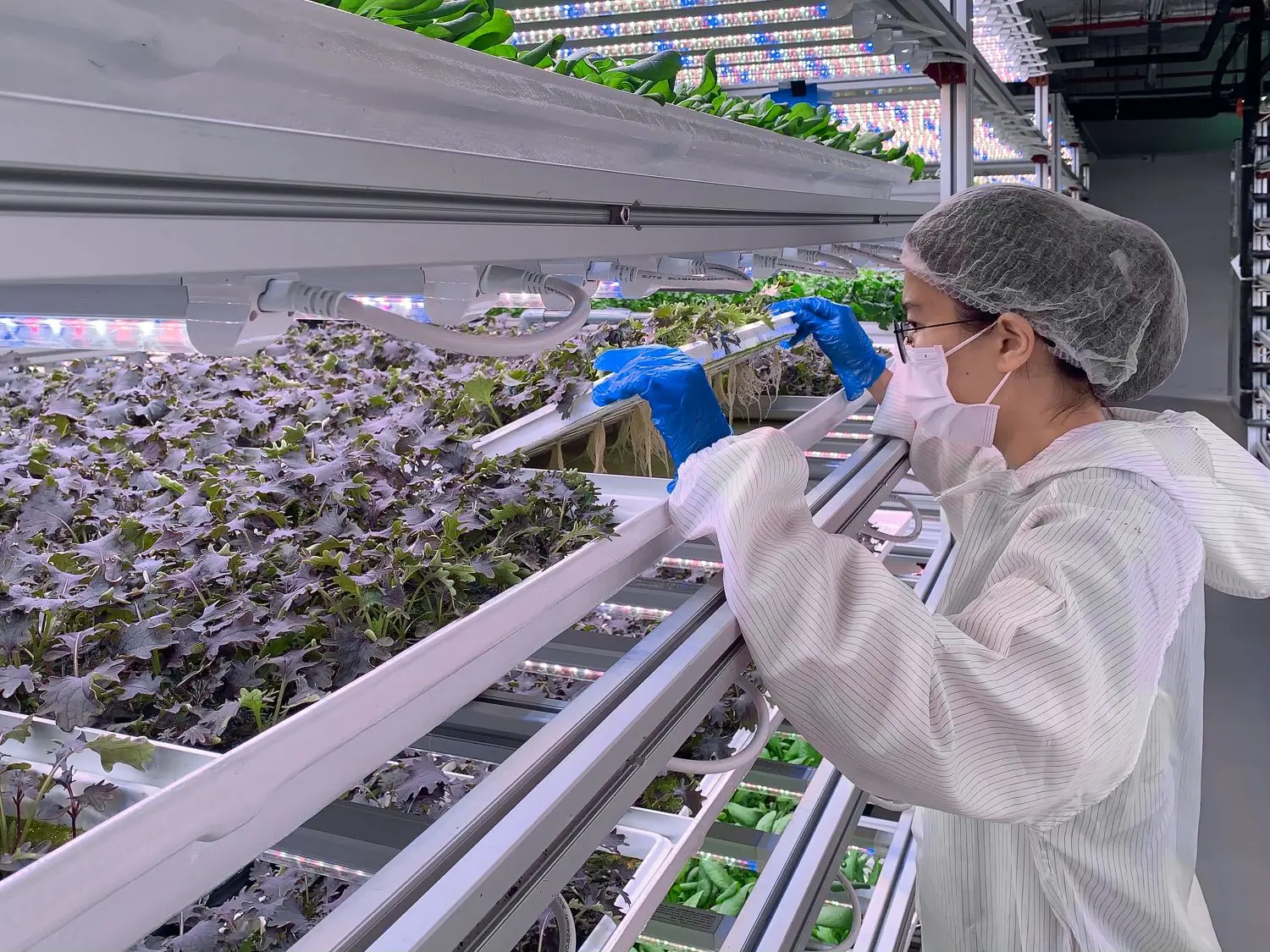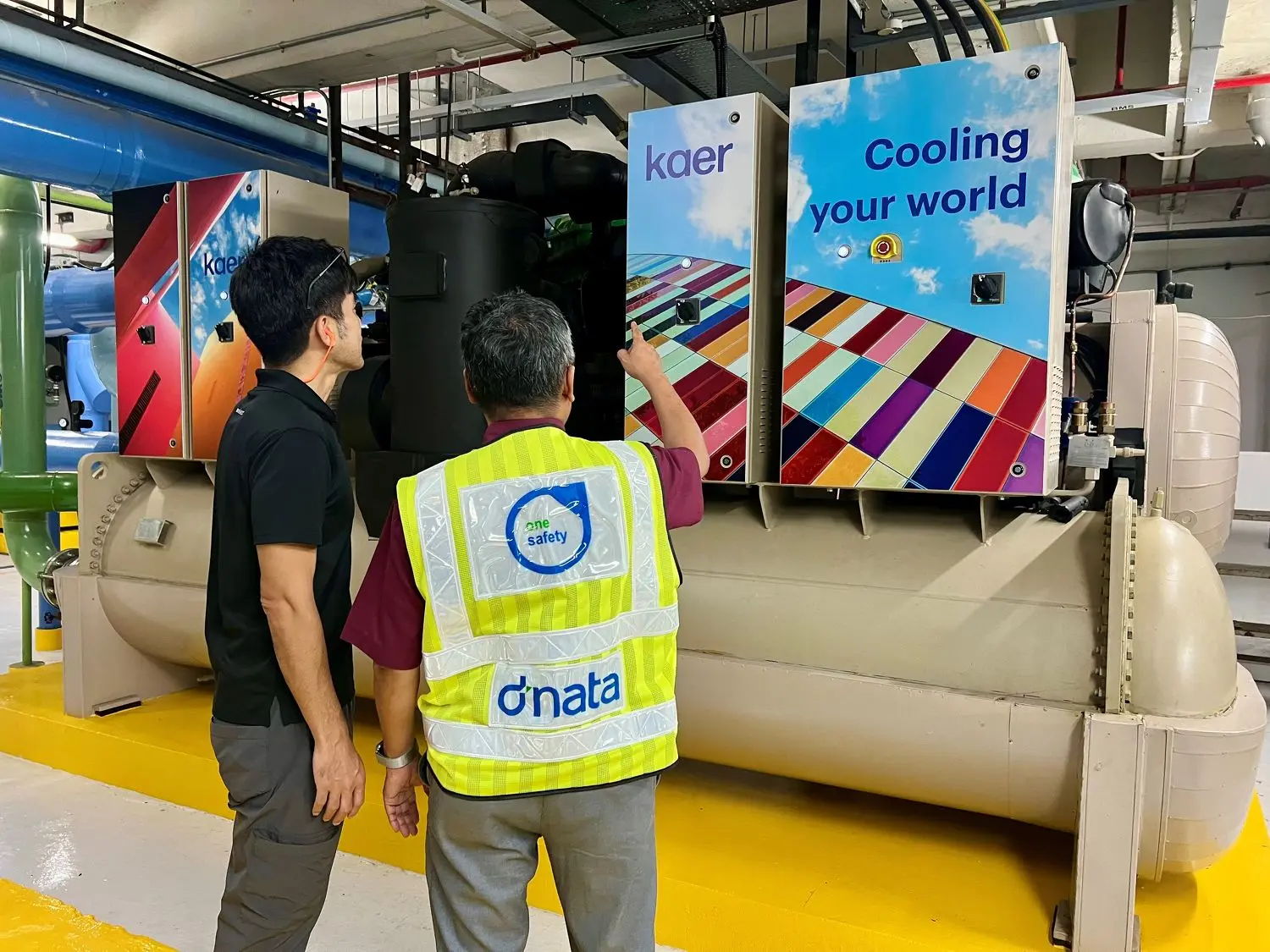Working towards a more sustainable future
Here’s how some companies in Singapore are making clear strides in decarbonising their operations using technology.
Using technology to advance sustainable farming

An integrated recipe control system will also make choosing the cultivation program for each crop easier. It can store and manage recipes, including lighting intensity and duration, irrigation schedules, nutritional requirements and temperature, thereby boosting resource efficiency. Furthermore, it can aid in reducing the risks associated with crop diseases, pests, and weather-related disruptions.
With optimum control over its farming operations, Artisan Green will be able to easily adjust sales planning and scheduling to meet the demand efficiently and optimise seeding and growing tasks.
All these capabilities will help boost Artisan Green’s current yield of leafy vegetables and herbs by 25-fold to reach 25 tonnes per month, which is estimated to generate 134,000 meals consisting of vegetables. The company will also be able to reduce its farm-to-table carbon footprint while minimising its overall waste throughout the harvest. For instance, it can expect to reduce its water usage by 95% compared to traditional farming and eliminate the need for pesticides.
Artisan Green also utilises various advanced technologies — such as its proprietary Precision Nutrient Injector, a Chilled Water cooling system, and Siemens’ energy management software — to reduce the energy consumption of its traditional indoor growing systems by half. Combining that with the new farm management system will enable Artisan Green’s farm to operate at 15 kWh per kilogram of produce in the future. This exceeds the Singapore Food Agency’s Clean and Green standards.
“Supported by Siemens’ state-of-the-art technological capabilities, we can advance our vertical farming operations and would greatly improve the efficiency of our manpower across operations, business planning and R&D. This will allow us to achieve greater production volumes at a lower operating cost, enabling us to provide fresh, high-quality local produce at affordable prices for Singaporeans. We fully intend to set a new benchmark for hydroponics operations and high-tech agriculture in Singapore and the world,” says Artisan Green founder Ray Poh.
Carbon-neutral cooling systems

Consequently, dnata saw a 54% reduction in energy consumption at its cargo base and a 35% reduction at its catering and support offices. dnata expects to save at least 650 metric tonnes of carbon annually, equivalent to the greenhouse gas emissions from 530 petrol-powered cars for one year. Kaer’s suite of solutions also allows for real-time monitoring and reporting of service levels, energy use, and carbon emissions for ESG (Environmental, Social and Governance) reporting.
Additionally, dnata believes that Kaer’s solutions will help save 1.5 million kilowatt hours of electricity per year. This will complement its existing green power efforts. For instance, dnata’s Singapore facilities are powered by a rooftop power plant comprising 6,500 individual solar panels, which generates over 4,300 megawatt hours of green power each year. As such, dnata cut its electricity-related carbon emissions by 20%.
“We are proud to be an early pioneer in low-GWP refrigerant, making our Singapore operations even more efficient and sustainable. We have plans to expand our CaaS initiatives to additional areas of our operations and look forward to working with our partners to reduce our environmental footprint further,” says Charles Galloway, dnata’s regional CEO of Airport Operations for Asia Pacific.
Decarbonising the digital economy

Equinix says its sustainability strategy encompasses more than energy efficiency, water management and resource recycling. It has put in place measures to ensure that all materials and resources are consistently reused, recycled, or regenerated, contributing to developing more sustainable infrastructure throughout its facilities.
Here are some of Equinix’s initiatives in Singapore that support its holistic approach to sustainability:
- Cooling tower EC fan replacement: Equinix has deployed new technology to enhance energy efficiency at its SG3 data centre by switching to Electronically Commutated (EC) fans for the cooling tower. This upgrade alone has resulted in over 4% of total energy savings.
- Installing a solar photovoltaic (PV) system that captures sunlight and converts it into electricity to support non-critical operations. It can generate 377 kWh of electricity when the sun is at its peak and currently powers corridor lighting at Equinix’s data centres.
- Implementing a modified chiller plant, which actively monitors and provides temperature adjustments to the cooling tower, enhancing overall energy efficiency.
- Installing motion-sensing detectors across its data centres’ hallways ensures that lighting is only active when needed. This reduces energy wastage and enables a more efficient power distribution across its data centres.
- Deploying cold-aisle containment system (CAC): Effective airflow management is crucial for reducing the power usage effectiveness of data centres and achieving significant energy savings. With CAC, Equinix’s facilities can reduce the difference between cooling and server temperatures.
Equinix achieved a 10% energy improvement across its data centres in Singapore last year through these initiatives and more. It is eyeing continued double-digit growth in energy efficiency year-on-year.
By Nurdianah Md Nur
https://www.theedgesingapore.com/digitaledge/digital-economy/working-towards-more-sustainable-future
